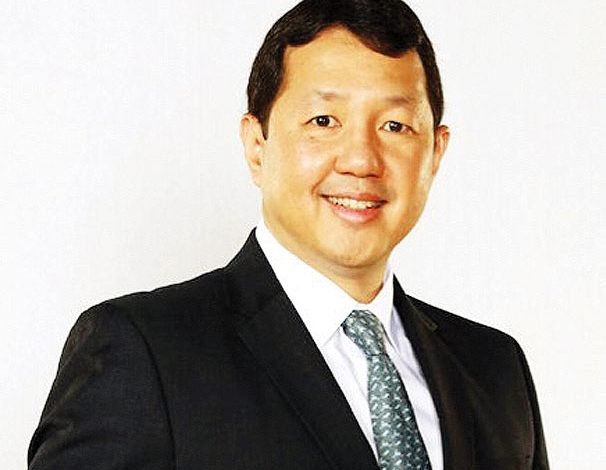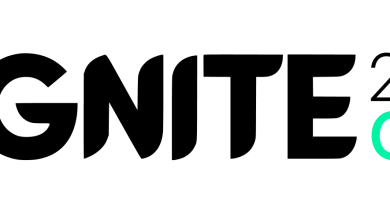Transformed by the pandemic: BusinessWorld braces for even more change on its 35th year

By Wilfredo G. Reyes, Editor-in-Chief
The young sub-editor sat stone-faced and unblinking before BusinessWorld’s brass early one morning, even as he was disappointed by the publisher’s outwardly lukewarm reception of a 1996 Asia-Pacific Economic Cooperation summit report which he had just presented. He had toiled on the report for weeks on end — conceptualizing the cover design and completely rewriting some articles — on top of work on regular pages that began at about 9 a.m. and stretched towards 10 p.m. daily.
It was just another brush with the exacting culture of quality he had struggled with since joining the publication as a reporter after leaving government service.
Sensing the newly promoted sub-editor’s discouragement, the city editor at that time took him aside. “Uy, dapat matuwa ka na ’nun. Ganun lang talaga si Boss magpuri ng trabaho (Hey, you should be glad. That is really just how Boss praises work.),” the senior editor said, referring to the late Raul L. Locsin who had founded the publication in July 1987. “Don’t expect a medal.”
Of course, talent management has improved by leaps and bounds since then, even as the focus on quality endures — it is probably one of the few things that has kept steady since BusinessWorld’s founding in mid-1987.
VETERANS’ TALESFor some BusinessWorld vets, the publication’s story from the start has been characterized in part by an awareness of available tools to kick the business up even just a notch through ever-present hurdles.
Ronaldo A. Romero, who started as news editor when BusinessWorld began operations and retired as publisher in 2006, recalled how computerization of the newsroom back then had cut the time it took to produce the newspaper. “Little by little, we were able to put the paper to bed earlier than 12 midnight, then 11 p.m., until we were able to close at 10 p.m.,” he recalled in a recent chat.
Besides that, focal to competitiveness even then was the quality of talent and well-oiled newsroom operations. “It is noteworthy that we had only so many reporters, but were still able to put one or two over the other dailies,” Mr. Romero added, saying that one “major advantage” was the ability of newsroom staff to promptly support reporters in the field who needed background information before interviews or for articles.
Marvin A. Tort — a BusinessWorld columnist who had served as managing editor through years that saw resurgent political and economic uncertainties, punctuated by the 2005 resignation of some Cabinet secretaries and senior officials amid a top-level election controversy — remembered the constant struggle “to look for new ways to distribute content” as print subscription plateaued.
“We were somewhat ahead in the online space, but revenues were still driven by print, and circulation was not growing,” he explained. In that setting, the online platform ended up “competing rather than complementing” print.
Among others, BusinessWorld ventured into a content partnership with the ABS-CBN News Channel at that time, and while that did not bring in ad revenue, it generated “greater awareness,” Mr. Tort recalled.
“We also started a breakfast forum, organizing events for subscribers to attend,” he added, generating revenue from sponsorship.
The 2007-2008 Global Financial Crisis made business even tougher, said Anthony L. Cuaycong, the publication’s former president who had been vice-president and chief operating officer at that time, noting that advertising slowed as “(t)he usual sources turned to papers with higher circulation, compelling management to think outside the box in order to enhance the paper’s value as an advertising medium.” At that time, he said, such efforts included coming up with special sections to lure specialized ads.
STANDARD FAREChallenges constantly knocking at BusinessWorld’s door notwithstanding, the publication has become standard fare for those monitoring the Philippine economy.
“To be effective in our work, my research team needs to know what’s in BusinessWorld each morning of each trading day, as we simply can’t afford to miss any major economic and financial market development,” Emilio S. Neri, Jr., lead economist at the Bank of the Philippine Islands, said in a recent interview.
“We find BusinessWorld articles a valuable source of information…,” he added, citing particularly the Quarterly Banking Report.
Peter Lee U, dean of the University of Asia and the Pacific’s School of Economics, who specializes in energy and industrial economics, said separately that BusinessWorld keeps him “posted on developments like the latest policy pronouncements of key government officials and business players, as well as releases of economic statistics.”
“When giving economic analyses and briefings to our public, one has to be aware of these developments,” he said.
“As an economics teacher, I use BusinessWorld reportage of developing and past issues to draw examples for my economics classes. This prevents economics lessons from remaining theoretical so that students can see it actually applies to real-life events, and thus understand how markets work,” he explained.
“In both cases, facts and figures need to be collected and monitored historically. To talk based on the latest numbers without knowledge of trends emerging from actual historical data is like shooting from the hip. Thus, I also go back to old news to give context, which is important as well in academic research.”
Still, newspapers have long since acknowledged the dire prognosis for print as a medium for content delivery. In fact, this had been a nagging planning topic after The Philippine Star took over BusinessWorld in mid-2015.
Major survey groups have provided an overall picture of the changed landscape of news consumption over the past two years, among others showing that close to half of Filipino adults (aged at least 18 years old) polled used the internet, with nearly all of that complement maintaining a Facebook account, almost half of those accessing the Web doing so to get news and just 1-3% relying on newspapers for such content. If anything, “internet use has been on a generally upward trend for all age and education groups since June 2006,” one of them — the Social Weather Stations — said in a September 2020 report. (1)
Jarring adjustments amid the disruption caused by the ongoing pandemic ironically provided the much-needed kick — making both editorial and business sense — towards digital space.
CHANGE HAS ONLY JUST BEGUNMiguel G. Belmonte, president and chief executive officer (CEO)of BusinessWorld and parent The Philippine Star, said earlier this month that fundamental principles will anchor the company as it dives further into the digital realm.
“BusinessWorld has always believed in and maintained the highest quality of journalism simply because this is what business readers deserve, whether they follow us on traditional platforms or on newer media channels. The important thing is that the quality of journalism will remain the same regardless,” Mr. Belmonte said.
“From a static medium, BusinessWorld was able to create new community of readers and followers in the digital space. BusinessWorld Insights and BusinessWorld Virtual Economic Forum became two of our most successful endeavors in the digital space. These were able to mitigate the impact of the pandemic in the last two years. Despite the challenges in 2020, we saw 2021 becoming profitable again and it looks like 2022 will be BusinessWorld’s most profitable year ever,” he added.
Miguel G. Belmonte, president & CEO of BusinessWorld Publishing Corp.
“On the other hand, we continue to embrace newer platforms to cater to the needs of our audience. The mission is quite simple: to remain the same by keeping our core values intact while evolving so that our brand is able to adapt to the changed media landscape.”
BusinessWorld’s current journey is mirrored in the wider business world.
In an effort to “build back better” as they claw their way out of the slump in the past two years, organizations are beating a path through an uncertain environment and fighting to survive through a pandemic, persistently fast-rising prices, successive interest rate increases, the fragile recovery of the overall economy and the growing risk of a global recession next year.
The internet is replete with prescriptions from consultancies and international organizations for those sailing further into such uncharted waters.
In its 2022 Global Risks Report, for example, the World Economic Forum isolated five emerging best practices in organizations’ quest for resilience:
• Identify specific types of failure or damage that could hit core business goals in order for organizations to gain a better appreciation of their capabilities and available tools that may have to be deployed, redesigned or improved.
• View vulnerabilities within a broader ecosystem that includes third parties on which organizations rely.
• Emphasize “just-in-case reliability” rather than “just-in-time efficiency” by putting backups and redundancies in place to ensure that the organization can adapt quickly for business continuity. In this effort, “(s)upportive employee behaviors are as vital as structural measures, especially when empowered by good leadership and effective communication,” the report said.
• Connect resilience efforts with environmental, social and governance (ESG) goals. “For example, shortening supply chains can advance net zero strategies as well as reduce exposure to adverse geoeconomic developments, while strong community relations may help recovery initiatives in the event of a disaster,” it said.
• Consider resilience as a journey and not as a target and constantly be alert to changing circumstances that could result in fresh blind spots and gaps that, in turn, would warrant urgent new adjustments.
For Bain & Company, “getting business resilience right” means staying on one’s toes to spot vulnerabilities as they emerge and improve scenario planning to prepare as best one can for the unforeseen.(2)
First off, “(t)here is no way you’re going to remove volatility,” Dunigan O’Keeffe, Bain’s head of Global Strategy practice, said in a January 2021 video discussion. And that, in a way, is a good thing. Amid all the talk these days about agility, his remarks bring to mind a principle behind new-generation fighter jets’ supermaneuverability (as seen in Top Gun: Maverick) — they are designed to be so inherently unstable they would drop like rocks were it not for onboard computers that keep them steady via microsecond adjustments.
Bain Director James Allen separately described the pandemic as “a dress rehearsal for a new, more turbulent world.” “…(W)ithout that pandemic, you’d still be heading for a new, more turbulent world. You just wouldn’t have had the dress rehearsal,” he said in another video. “… (H)ow adaptable are you to more turbulence?” (3)
“There’s this issue that you’re preparing for yesterday’s ‘(black) swan’ event. Right, you had a problem with commodity pricing and now you’re hedging. Turns out that the next one event is a technology problem. That’s a big issue,” Hernan Saenz, Bain’s global head for Performance Improvement practice, explained in the January 2021 video. “And the other one is to just cover certain areas, right: the ones you’ve covered in the past and the ones that you read about in the news. But now, you have to cover everywhere — your strategy, your operations, your organization, your technology. So you don’t want surprises in any big angle of your business.”
Lessons have been myriad: from having leadership positions in various parts of the company’s portfolio, to being aware of which business segments risk being very stressed in a crisis, to a culture and structure (i.e., empowering local teams more) “close enough to the frontline with the customer, such that you see those crises early and are able to respond,” to cite just a few.
Turning to the global challenge of worsening inflation, Bain said that companies that improve productivity by cutting costs and spending better, while adjusting prices and finding new sources of growth will “weather the storm best.” It noted that the current inflationary period differs from the last one in the early months of the 2008 global recession in that labor markets are tighter and supply chains are more constrained, though consumer demand has not dipped the way it did then. “As they prepare for higher inflation in this new environment, companies will need to make moves that not only cut costs but also build more scalable growth platforms, positioning them to strategically reinvest in programs that deliver greater resilience and stronger purchasing and pricing capabilities,” Bain said in an April 2022 article. “They need cost programs that allow them to grow top-line revenue and reduce their dependence on difficult labor markets while improving employee retention.” (4)
Boston Consulting Group (BCG) identified a number of priorities for corporate leaders this year. (5)
The list includes figuring out which features adopted amid the pandemic that enabled an organization to respond quickly to contingencies, like breaking down traditional barriers as well as forming and empowering small teams to address key challenges, to keep. The company can then deploy more resources to scale up and then integrate what works in these teams. “Competing on innovation velocity should be a pressing priority for 2022,” said Karalee Close, BCG’s managing director and senior partner, as well as global leader for Technology Advantage.
ESG may also be catching on, but “make sure your company’s good deeds are profitable and scalable,” said Richard Hutchinson, BCG managing director and senior partner, as well as global leader for Social Impact practice. “Investors, employees, governments, and other stakeholders increasingly expect companies to work for the public good. These expectations have risen dramatically in just the past few years,” he said. “My advice is that if you want to make a real social impact, find something you can do profitably. Because if it’s profitable, it’s scalable. And if a solution is scalable, it can be really powerful.” The trick, Mr. Hutchinson said, is to find ways to incorporate such initiatives into the core business.
Organizations also need to rethink and recalibrate their talent management framework, said BCG Managing Director and Senior Partner Deborah Lovich. That, she said, involves finding out what makes key workers tick or dissatisfied and then collaborating with them to craft better structures and arrangements that would be good for both them and the business.
Finally — for those considering adoption of artificial intelligence (AI) — there is a need to first understand AI’s full potential for one’s business before moving forward, said François Candelon, BCG managing director and senior partner, as well as global director of its Henderson Institute think tank. “CEOs know that it’s important and are ready to make serious investments,” Mr. Candelon said of AI. “But many don’t really understand what to do with it. To borrow a French saying, it’s like giving a knife to a chicken. Not surprisingly, only around 10% of companies say that they see significant financial returns on their AI investments, according to a recent study we at BCG conducted with MIT Sloan Management Review.”
Zeroing in on digital transformation, McKinsey & Co. said that while most organizations have dived into digitalization to varying degrees, “simply getting projects off the drawing board doesn’t guarantee that the organization is increasing revenue, profitability, market share, efficiency, or competitive moats as a result.” Besides having the top brass engaged in this effort, ensuring success would require prioritizing scalable initiatives that will substantially improve organization performance, focusing on minimally viable outcomes that can be improved over time, as well as measuring and tracking the impact and value creation of digital initiatives. (6)
“To maximize returns, we recommend transforming one business domain at a time and broadening from there for traction and coherence,” Laura LaBerge, director of Capabilities for Digital Strategy at McKinsey’s Stamford, Connecticut, office as well as senior partners Kate Smaje and Rodney Zemmel said in a June 2022 article. Focusing on one critical process or function at a time, they said, “allows organizations to leverage similar data sets, technology solutions, and team members for multiple use cases, which ultimately saves time and expense.” (7)
They also noted that, among others, use of digital technologies to achieve competitive differentiation in terms of customer engagement and innovation, rather than to merely achieve cost efficiencies, would have better chances of reaping these investments’ full value.
IN A STATE OF FLUXOur 35th anniversary report now seeks to provide an idea of how environments have changed for a selection of industries and sectors and what stakeholders there have been doing or can do, not only to cope but also to thrive.
If anything, BusinessWorld’s own migration to the digital realm amid continuing disruption remains a work in progress. A process that accelerated a quarter after the declaration of a pandemic in March 2020 has given this publication a slew of brands in its digital portfolio, including the BusinessWorld Virtual Economic Forum; BusinessWorld B-Side podcasts available on Spotify, Apple Podcasts and Anchor; BusinessWorld Insights online discussion with experts; BusinessWorld In-Depth Magazine that now includes the Quarterly Banking Report; BWorld Lounge Viber community; and BusinessWorld One-on-One virtual interviews with top government and private sector leaders, among others.
Coming up are even more initiatives as we maximize the digital potential of BusinessWorld’s content and services. So please stay tuned.
(1)For details of the Pulse Asia and Social Weather Stations surveys from late 2019 to late last year, go to https://www.pulseasia.ph/september-2021-nationwide-survey-on-news-sources-and-use-of-the-internet-social-media-and-instant-messaging-applications/ and https://www.sws.org.ph/swsmain/artcldisppage/?artcsyscode=ART-20200908150946.
(2)Dunigan O’Keeffe, Hernan Saenz, Andrew Schwedel, and Thomas Devlin, “Getting business resilience right,” https://www.bain.com/insights/getting-business-resilience-right/; “Dispelling Five Myths on Business Resilience, https://www.bain.com/insights/dispelling-five-myths-on-business-resilience-video, Jan. 7, 2021.
(3)James Allen, “Roadmap for a post-pandemic world,” https://www.bain.com/insights/roadmap-for-a-post-pandemic-world-video, 7 April 2021.
(4)Jaxon Heinrich, Simon Henderson and Megan Portanova, “Turning inflation disruption into value with six strategic steps,” https://www.bain.com/insights/turning-inflation-disruption-into-value-with-six-strategic-steps/?utm_medium=email&utm_source=mkto&utm_campaign=OPT-q2-best-of-bain-insights-2022-07-06&utm_term=turning-inflation-disruption-into-value-with-six-strategic-steps&mkt_tok=Mzc4LU5ZVS0yMjAAAAGFdIBJ7R-mYDLZjs60DgZdBqelF2W00RGF8Wot1M5fPkIDJgXjtZ0FsEqG09-hMayL7k_Lkc5virk91aS55GvfnLfB07s6UPnuaY5R2IZ0, April 18, 2022.
(5)Priorities for the C-Suite in 2022, https://www.bcg.com/publications/2022/c-suite-executive-priorities-2022, Jan. 10, 2022.
(6)Matt Fitzpatrick and Kurt Strovink, “How do you measure success in digital?” https://www.mckinsey.com/business-functions/mckinsey-digital/our-insights/how-do-you-measure-success-in-digital-five-metrics-for-ceos, Jan 21, 2021.
(7)Laura LaBerge, Kate Smaje and Rodney Zemmel, “Three new mandates for capturing a digital transformation’s full value,” https://www.mckinsey.com/business-functions/mckinsey-digital/our-insights/three-new-mandates-for-capturing-a-digital-transformations-full-value, June 15, 2022.




